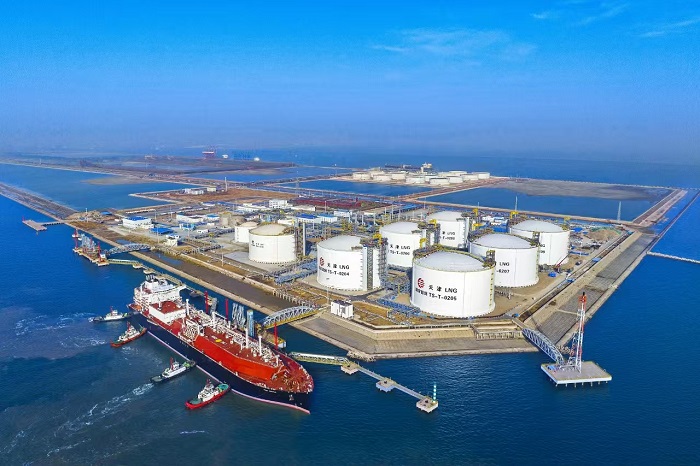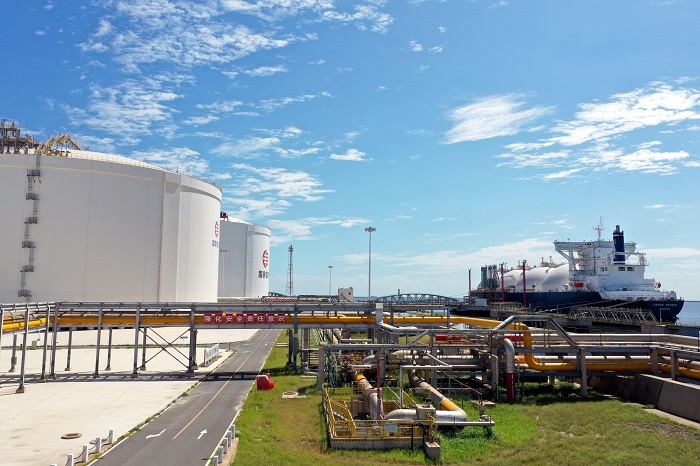The second phase of the Tianjin LNG project of the National Pipeline Network Group has been officially put into operation
Another LNG receiving terminal with a capacity of over 10 million tons has been added to North China
On September 9th, the second phase of the Tianjin LNG Receiving Station project of the National Pipeline Network Group, a key national project for the interconnection of natural gas infrastructure, was officially put into operation. After its commissioning, the Tianjin LNG receiving Station officially entered the ranks of LNG receiving stations with an annual capacity of over 10 million tons, significantly enhancing the natural gas supply and emergency peak shaving capacity in North China and its surrounding areas.

As an important livelihood project and energy supply guarantee project in the national "production, supply, storage and sales" system construction, the second phase of the Tianjin LNG project started construction in April 2020 and has successively completed and put into use six 220,000 cubic meter storage tanks and supporting external transportation facilities. After the commissioning of the three LNG storage tanks and their supporting facilities this time, the total gas supply capacity of the Tianjin LNG receiving Terminal will reach 12 million tons per year, the total gas storage capacity will reach nearly 1 billion cubic meters, and the gasification and external transportation capacity will reach 70 million cubic meters per day. It will become the LNG receiving terminal with the strongest daily gasification capacity in China and further play the emergency peak shaving role of the LNG receiving terminal. Ensure the supply demand of natural gas during periods of "high months and high days" such as the heating season.
The project made the first batch use of key equipment such as large-sized domestic cryogenic valves and high-pressure pumps, which not only saved costs but also shortened the construction period. The project utilizes 3D modeling and data intercommunication in various stages such as design, construction, and commissioning to achieve "full life cycle" digital delivery management and enhance the intrinsic safety level.

During the commissioning period, the Tianjin LNG Receiving Terminal comprehensively considered the shipping schedule and the high-flow pressurization time of the external transmission pipelines, rationally arranged the pre-cooling time of the storage tanks, and maximized the recovery of BOG (evaporative gas) generated by the pre-cooled storage tanks, achieving "zero venting". It is estimated that about 3.9 million cubic meters of natural gas will be reduced in emissions.
Tianjin boasts excellent natural gas routes and is an important liquefied natural gas (LNG) hub city in the north. Its role as a regional LNG distribution and storage center is particularly prominent. After the project is put into operation, as the largest liquid export base and a ten-million-ton LNG receiving terminal in North China, the Tianjin LNG receiving Terminal will become an important energy reserve and peak shaving base for natural gas supply security in the Beijing-Tianjin-Hebei region, making new contributions to building a clean, low-carbon and efficient energy system, promoting the coordinated development of the Beijing-Tianjin-Hebei region and enhancing people's well-being.
